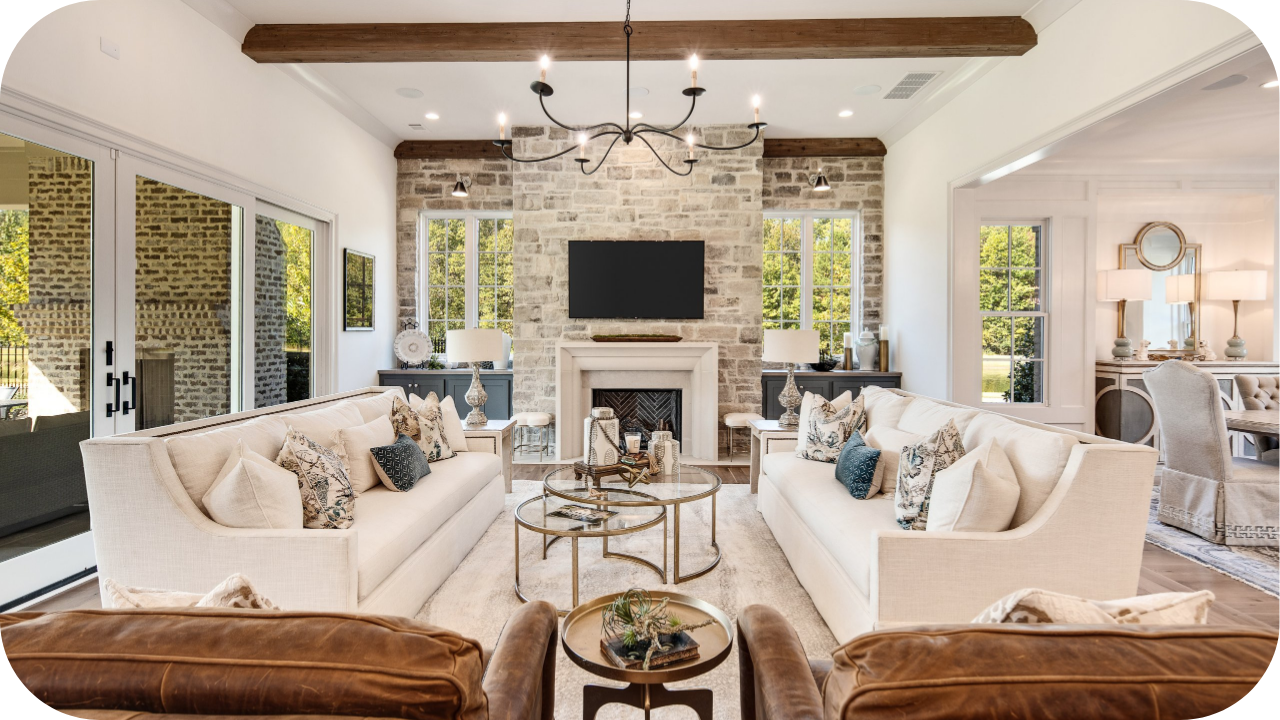
Fed up with lacklustre landscapes?
Don’t let dull retaining walls ruin your outdoor space or fail to hold back soil. Instead, explore our guide to discover the top stones that will transform your landscape while providing sturdy support against erosion.
Enhance your outdoor oasis with the perfect stones for retaining walls, ensuring aesthetic appeal and functionality.
Considerations for Retaining Walls
| Consideration | Details |
| Soil and Drainage Assessment | Evaluate soil type and drainage conditions of the site. Choose materials and design features accordingly. Ensure proper drainage behind the wall. |
| Height and Length Considerations | Determine the height and length of the wall. Taller walls require stronger materials and reinforcement. Longer walls may need additional support. |
| Material Selection | Choose stones or materials based on durability and weather resistance. Consider compatibility with the environment and aesthetic appeal. |
| Regulatory Compliance | Check local regulations and obtain necessary permits. Adhere to height and setback limits imposed by authorities. |
| Professional Consultation | Seek guidance from professionals or local authorities if needed. Ensure compliance with legal requirements and best practices. |
| Installation Techniques | Focus on proper installation methods for stability.Pay attention to foundation, backfilling, and alignment. |
Overview of Stone Options for Retaining Walls
In retaining walls, various stone options offer functional support and aesthetic appeal. Here’s a concise overview of the most popular stone choices:
- Limestone: Known for its timeless elegance, limestone offers a classic look with subtle variations in colour and texture. It’s durable and weather-resistant, making it suitable for various climates.
- Sandstone: Sandstone, characterised by its warm hues and natural texture, adds a rustic charm to retaining walls. It’s relatively easy to work with and provides excellent durability against the elements.
- Granite: Renowned for its strength and durability, granite is an ideal choice for high-traffic areas or heavy-load retaining walls. It boasts a polished appearance and a range of colours and patterns.
- Bluestone: With its distinct blue-grey hue, bluestone creates a striking contrast in outdoor spaces. It’s durable and versatile, suitable for traditional and contemporary landscape designs.
- Fieldstone: Offers a natural, earthy aesthetic with irregular shapes and sizes. Its retaining walls blend seamlessly with the surrounding environment and provide excellent stability.
- Brick: Adds a charming, rustic touch to retaining walls. It is durable and can withstand environmental factors, making it a popular choice for residential and commercial landscapes.
- Stacked Stone Veneer: Mimics the appearance of natural stone but with a lighter weight and easier installation process. It offers a variety of colours and textures to suit different design preferences.
Stirling Sandstone for Retaining Walls
Stirling Sandstone is an exceptional choice for retaining walls, valued for its robustness and aesthetic qualities. Quarried in the Stirling region of Scotland, this sandstone boasts a distinctive palette of warm, earthy tones that integrate seamlessly with outdoor environments.
Its dense structure ensures durability, enabling it to endure severe weather conditions like heavy rain and freezing temperatures.
A notable feature of Stirling Sandstone is its porous nature, which promotes effective drainage and reduces hydrostatic pressure, a frequent cause of wall failure.
The stone can be precisely cut, allowing for various design options, from classic stacked styles to intricate patterns, enhancing the visual appeal of any landscape.
However, it’s essential to consider the weight of Stirling Sandstone, which requires careful handling and professional installation to maintain structural integrity.
Despite the initial installation demands, the stone’s long-term benefits—including its visual appeal, resistance to environmental elements, and low maintenance needs—render it a cost-effective choice for durable and attractive retaining walls.
Tuscano Limestone for Retaining Walls
Tuscano limestone is highly regarded for its exceptional properties and is suitable for retaining walls.
This limestone is sourced from the Tuscan region of Italy, known for its soft, neutral colours that complement a wide range of landscape designs. Its subtle tones provide a sophisticated backdrop that enhances the natural beauty of garden spaces.
One of Tuscano limestone’s standout features is its ability to resist weathering, thanks to its dense and compact structure.
This makes it ideal for retaining walls exposed to varying weather conditions, ensuring longevity and stability. Additionally, its resistance to abrasion and ability to bear significant weight make it a reliable choice for structural purposes.
The stone’s weight demands professional handling and careful engineering to secure the wall against shifting and settling.
The installation of Tuscano Limestone retaining walls does require some attention to detail.
Despite these considerations, Tuscano limestone’s low maintenance requirement and its enduring beauty make it a preferred choice for landscape architects and homeowners who want durability without sacrificing aesthetic appeal.
Roman Sandstone for Retaining Walls
Roman sandstone is a preferred material for retaining walls and is celebrated for its durability and classic aesthetic.
Originating from regions with historic stone-working traditions in the Roman Empire, this sandstone offers a spectrum of rich, natural colours that can elevate the appearance of any landscape design.
Characterised by its high compressive strength, Roman Sandstone withstands the demands of heavy loads, a crucial feature for retaining walls.
Additionally, Roman Sandstone is resistant to weathering, ensuring that walls built with this stone maintain their structural integrity and visual appeal over time, even when exposed to elements like rain and frost.
Moreover, Roman Sandstone has excellent permeability, allowing for effective drainage that prevents water buildup behind the wall—a common issue leading to structural failures. Its uniform texture facilitates easy installation and provides a clean and cohesive look, adaptable to modern and traditional styles.
For those considering Roman Sandstone, it’s important to note that while the stone is structurally sound and aesthetically versatile, it does require skilled installation to handle its weight and optimise the wall’s alignment and security.
Despite this, Roman sandstone’s longevity and minimal maintenance needs make it a cost-effective and attractive option for retaining walls.
Case Studies and Examples
Case Study 1: Roman Sandstone Retaining Walls
Location: Public park in Sydney, New South Wales.
Stone Used: Roman Sandstone
Description:
Roman Sandstone was chosen for its historical resilience and visual appeal for the construction of retaining walls in a large public park in Sydney.
The sandstone, valued for its durability and classic texture, has proven effective in withstanding the varied Australian climate, including intense sun and occasional heavy rains.
Its aesthetic properties, featuring deep, warm tones, integrate well with the park’s natural and built environments, enhancing the overall landscape while providing necessary structural support and erosion control.
This case study exemplifies the stone’s capacity to meet both aesthetic desires and practical requirements in urban landscape settings.
Case Study 2:Tuscano Limestone Retaining Walls
Location: Residential property in California.
Stone Used: Tuscano Limestone
Description: Tuscano Limestone was selected to enhance the property’s Mediterranean aesthetic for a series of tiered retaining walls.
The limestone’s natural beige and cream colours supported the structural integrity required for the sloping landscape and complemented the area’s lush greenery and architectural style, creating a seamless integration between function and natural beauty.
Case Study 3: Stirling Sandstone Retaining Walls
Location: Residential estate in Perth, Western Australia.
Stone Used: Stirling Sandstone
Description: Stirling Sandstone was selected for retaining wall construction in a luxurious residential estate in Perth.
This choice was driven by the stone’s exceptional strength and aesthetic qualities, including its unique colour variations that range from subtle earth tones to rich, deep hues. These walls support the landscaped terraces and contribute to the estate’s visual appeal, enhancing the area’s natural beauty.
The stone’s durability ensures it stands up to Perth’s hot summers and occasional rains, maintaining its structural integrity and visual appeal over time. This project highlights Stirling Sandstone’s dual functionality as a practical and decorative element in high-end landscape architecture.
Maintenance and Care of Retaining Walls
Maintaining the integrity and appearance of retaining walls is crucial for their longevity and effectiveness. Here are essential guidelines for the care and maintenance of retaining walls:
- Regular Inspections: Conduct bi-annual inspections to check for any visible signs of damage such as cracks, bulging, or shifting stones. Early detection of these issues is key to preventing major repairs.
- Weed and Plant Control: Vegetation can cause significant damage as roots grow into and between the stones, potentially displacing them. Regularly remove weeds and monitor plant growth near the wall to avoid root intrusion.
- Drainage Maintenance: Ensure drainage systems, such as weep holes or drainage pipes installed within or behind the wall, are clear of debris. Proper drainage is essential to prevent water buildup that can increase hydrostatic pressure and compromise the wall’s stability.
- Cleaning: Periodically clean the wall to remove dirt, moss, or algae. Use a soft brush and, if necessary, mild detergent mixed with water to avoid damaging the stone surface.
- Immediate Repairs: If damage or irregularities are detected during inspections, address them promptly. Repairs like repositioning stones or refilling joints can prevent larger issues and extend the wall’s life.
Budget Considerations and Installation Tips
Budget considerations and installation tips are crucial when planning the construction of a retaining wall, ensuring a cost-effective and successful project.
Budget Considerations:
- Material Costs: The choice of stone impacts the budget significantly. Natural stones like limestone and sandstone are more expensive than manufactured alternatives. Consider the cost per square foot, including delivery.
- Labour Costs: Professional installation is recommended, especially for large or complex designs. Labour costs vary based on the installation difficulty and the local labour market.
- Additional Costs: Don’t overlook additional expenses such as drainage systems, landscape fabric, and building permits, which are essential for the wall’s longevity and compliance with local codes.
Installation Tips:
- Proper Foundation: Ensure a solid foundation by digging a trench a few inches deeper than the planned base and filling it with a layer of compacted gravel.
- Correct Drainage: To reduce hydrostatic pressure behind the wall, incorporate a drainage system using gravel backfill and drainage pipes.
- Level Layers: As you build, check that each layer of stone is level. This prevents future structural problems and enhances the wall’s appearance.
- Capstones: Secure capstones with mortar or construction adhesive to protect the wall from water infiltration and to give a finished look.
Conclusion: Top Stones for Retaining Walls
Choosing the right stone for your retaining wall is essential for longevity and aesthetics. From Tuscano Limestone to Roman Sandstone, each offers unique benefits.
Consider your landscape’s needs and budget carefully.
Ready to transform your outdoor space? Contact Splendor in Stone today and start building a retaining wall that stands the test of time.
More To Explore

Stone Accents: Adding Charm to Modern Interiors with Natural Stone
Modern interiors seek a balance of style, durability, and uniqueness. Natural stone accents are a game-changer, adding timeless elegance and character to any space. As

Natural Stone Features That Will Transform Your Living Room
Natural stone elevates any living room with elegance, texture, and timeless appeal. Its versatility allows it to enhance both modern and traditional spaces. From stone


